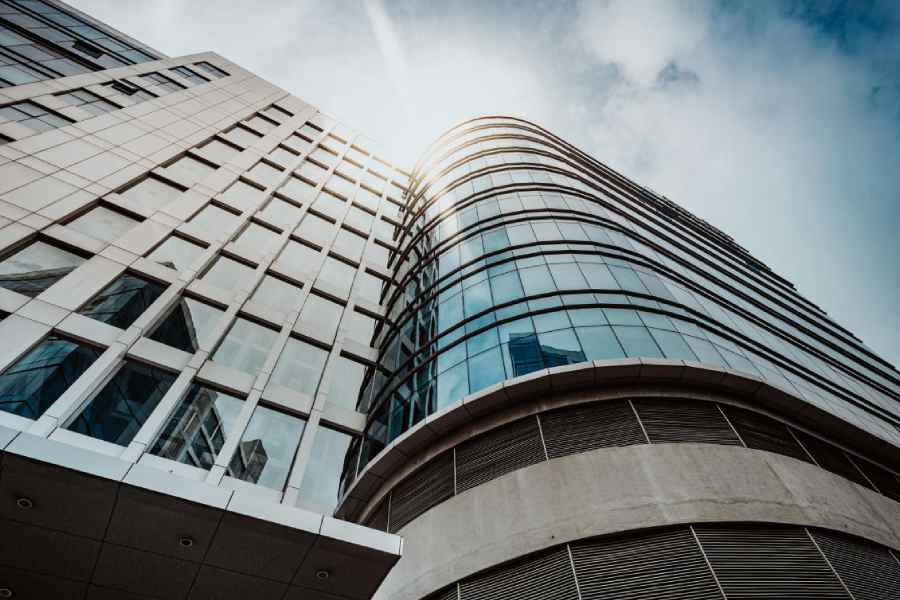Modern air-conditioned office buildings may not always provide an escape from poor urban air quality.
A study of air quality inside 30 air-conditioned office buildings in nine cities across the country has found the average carbon dioxide levels exceeding the ideal threshold at sites in 22 buildings. In some buildings, peak carbon dioxide levels were twofold to threefold higher than the threshold.
The study has also found concentrations of particulate matter smaller than 2.5 microns (PM2.5) and formaldehyde vapours exceeding ideal limits in 13 buildings, flagging their poor indoor quality.
The researchers who assessed the buildings’ indoor environments have attributed their findings to poorly maintained building systems as well as inappropriate practices by building operators and occupants.
The study, published in the Journal of Building Engineering, is among the first in India to probe indoor environments at buildings through representative samples from different climatic zones — both hot and cold, temperate, and warm and humid. Earlier studies had primarily looked at temperature or indoor air quality at single sites.
“There might be this thinking that once you’re inside your office, you’re in a safe zone, particularly with respect to air quality,” said Pooja Shukla, an architect and senior director of innovation and research at the Green Business Certification Institute (GBCI), India, a private agency that certifies buildings for energy consumption and environmental quality standards.
“But this isn’t always true,” Shukla, the study’s lead author, told The Telegraph.
Shukla and her collaborators found that the median average carbon dioxide levels in the buildings ranged from 538 parts per million (ppm) to 1,975ppm.
The 30 buildings they selected were in Bangalore, Chennai, Coimbatore, Delhi, Gurgaon, Jaipur, Noida, Mumbai, and Pune and served as office spaces for people in the information technology, accounting and finance, and consultancy sectors.
In some offices, these values were more than twofold higher than the 800ppm recommended by the Indian Society of Heating Refrigeration and Air Conditioning Engineers (ISHRAE) for indoor air quality standards. In one building, the peak carbon dioxide value was 2,570ppm.
Properly functional outdoor air intake can check carbon dioxide levels. However, at four sites, the building operators had shut down the outdoor air intake channels as a strategy to reduce the heating or cooling load on the heating, ventilation, and air-conditioning systems. At two other sites, the operators had shut down the outdoor air intake channel to block the ingress of outdoor pollution.
At sites in three buildings, ventilation systems were functional and well-maintained but unable to curb the rising carbon dioxide levels. In one building, the operators had set carbon dioxide sensors incorrectly, allowing the gas concentrations to exceed the threshold.
Twelve of the 30 buildings had openable windows but at many sites, occupants did not open them citing outdoor pollution or noise.
The ISHRAE standards set ideal thresholds of 15 micrograms per cubic metre for PM2.5 and 30 micrograms per cubic metre for formaldehyde. Thirteen buildings exceeded the limit for PM2.5, while another set of 13 buildings exceeded the limit for formaldehyde.
PM2.5 particles are small enough to penetrate deep into the lungs just like formaldehyde vapours and cause severe respiratory tract irritation. The researchers have speculated that the source of the formaldehyde in the buildings was likely to be emissions from the cleaning products used in the office spaces.
The study found that well-maintained filtration systems were able to reduce the PM2.5 levels indoors to below the threshold of 15 micrograms per cubic metre until outdoor PM2.5 levels were below 67 micrograms per cubic metre.
“We’re hoping our results will enhance awareness about indoor environmental quality in Indian offices and encourage building operators to take actions to improve the indoor environment,” Shukla said.










